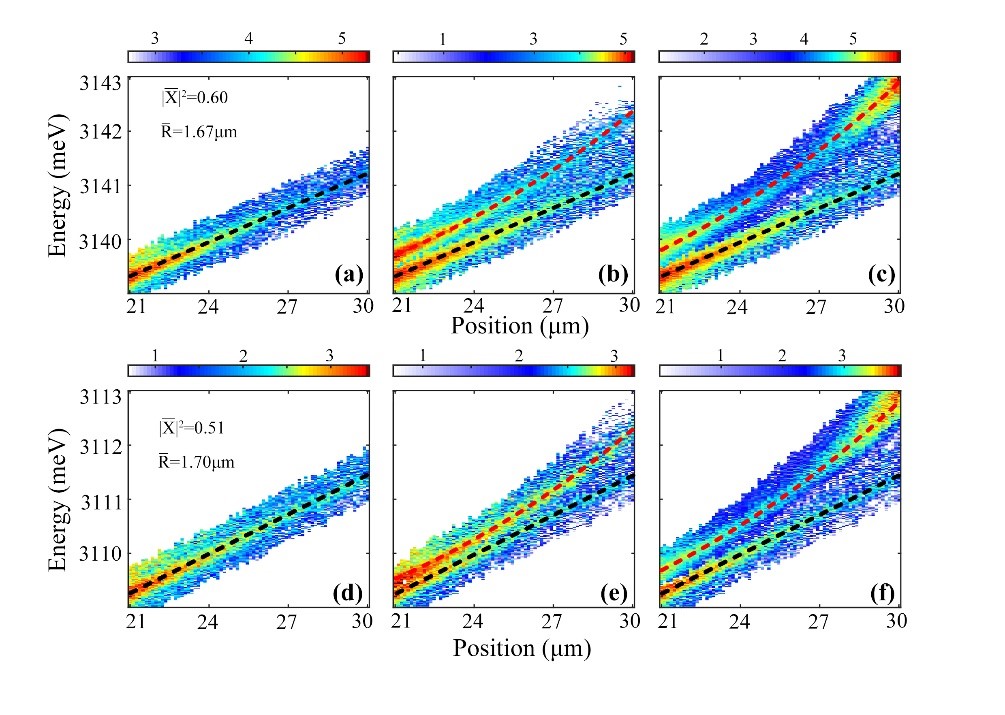
Shift and bending of polariton potential hills induced by their inter-particle interactions. Upper (Lower) panel corresponds to polaritons with ~60% (~51%) excitonic fraction. From left to right: density of polaritons was increased gradually. The shift and bending of the potential hills give direct measurement of the polariton-polariton interaction strength. R: radius of the microrod.
(Nano Letter 20 (3), 1552-1560 (2020), https://doi.org/10.1021/acs.nanolett.9b04121)
Exciton-polaritons are bosonic quasi-particles that stem from the strong coupling between semiconductor excitons and cavity-confined photons. They are ideal testing grounds for the study of macroscopic quantum states. Now it’s clear that much of the fascinating polariton physics, such as Bose-Einstein condensation at room temperature, are essentially governed by the Coulomb interactions among polaritons. However, due to their coexistence with other charge carriers and their limited lifetime, it is very difficult to measure accurately the strength of polartion-polariton interactions. In our experiments, we managed to do this through their Bose-Einstein condensation behavior and half-light half-matter nature.
What did we discover?
We obtained pure polariton fluid by expelling polaritons from the laser injection spot using the repulsive polariton-reservoir interactions. The absolute polariton density was calibrated using the Bose-Einstein condensation of polaritons as a benchmark. By doing so, we successfully extracted the pure polariton-polariton interaction constant and found that it is up to two orders of magnitude larger than theoretical predictions.
Why is this important?
The Coulomb interactions among polaritons essentially govern the dynamics and optical properties of exciton-polaritons. Many of the fascinating phenomena, such as quantized vortices and tunable magnetic alignments, are closely related to the polariton-polariton interactions. A comprehensive understanding of such polaritonic interactions is thus of fundamental importance.
Why did they need WHMFC?
All measurements in this work were performed using the angle-resolved micro-PL system, which is an important part of the micro-magneto-optical system being developed in Wuhan National High Magnetic Field Center. This system provides direct measurements of carrier distributions in momentum space, which is unavailable in conventional spectroscopy.
Who did the research?
Chuan Tian, †‡ Beier Zhou, §‡ Chunyan Xu, † Yingjun Zhang, † Xiamei Zheng, † Jian Zhang,† Long Zhang,§# Hongxing Dong,§#* and Weihang Zhou†*
† Wuhan National High Magnetic Field Center and School of Physics, Huazhong University of Science & Technology, Wuhan 430074, China
§ Key Laboratory of Materials for High-Power Laser, Shanghai Institute of Optics and Fine Mechanics, Chinese Academy of Science, Shanghai, China
# Hangzhou Institute for Advanced Study, University of Chinese Academy of Sciences, No.1, Sub-Lane Xiangshan, Xihu District, 310024, Hangzhou, China
